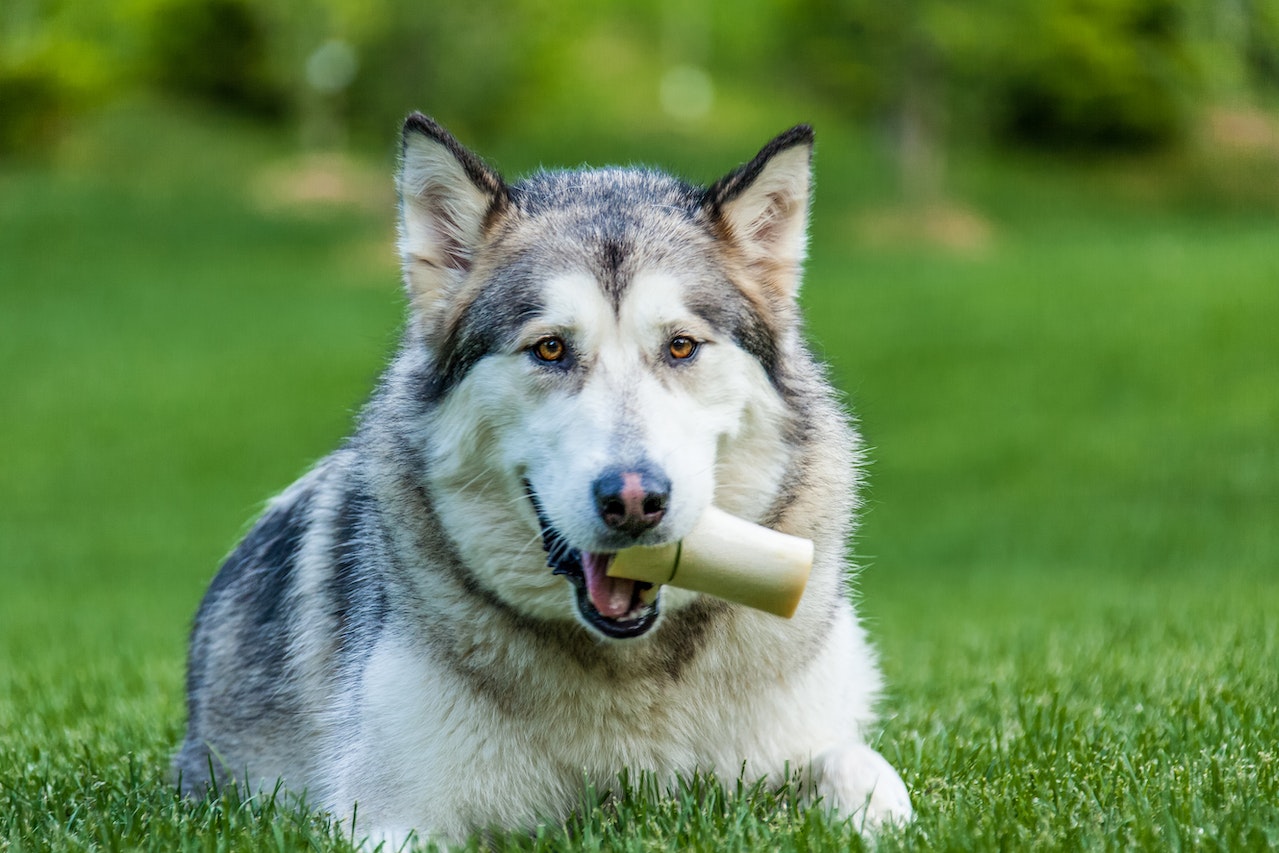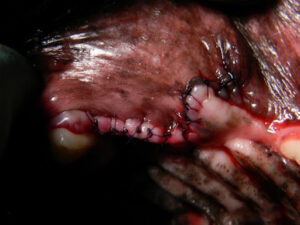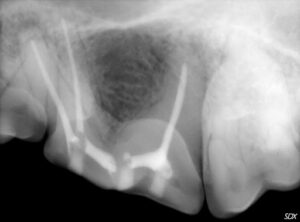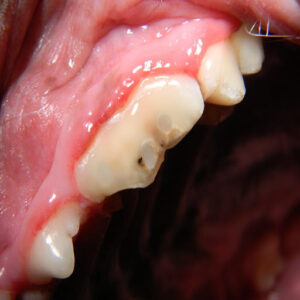
18 Aug Should You Give Your Dog Marrow Bones?
Dogs love to chew and pet owners love to give their dogs things to chew on. There are a vast array of chew toys and bones available to pet owners in retail pet stores and online. With neverending options, the challenge is knowing which ones are safe for your pet.
Perhaps one of the most common products available are marrow bones, but are they truly good for your dog to chew on? Are the teeth of a dog, regardless of their size, strong enough to withstand the forces placed on them when chewing a marrow bone that is harvested most often from cows?
Are Raw Marrow Bones Safe for Dogs?
To answer this question, we must look at the anatomy of a dog’s teeth.
Enamel covers the crown of a tooth. It is the strongest tissue in the body of a dog, however, it has very little elasticity or “give” to it.
Why is this so? Enamel is almost completely made up of inorganic minerals and has very little inherent moisture, therefore, it has next to no elasticity. When excessive forces are placed on enamel something has to give and it is most often the crown of a tooth.
Enamel also has no regenerative capacity, so when it is damaged that enamel is gone and no new enamel will form. It is mostly impermeable.
Dentin makes up the bulk of tooth structure and is covered by enamel in the crown and cementum in the root. Unlike enamel, dentin has a larger organic and moisture component. Most of its organic component is collagen, which has much more elasticity than enamel.
Dentin is constantly growing during the majority of the life of the tooth, and it does have regenerative capability, unlike enamel. Dentin is also permeable and can allow bacteria and other contaminants through it when exposed by damage to the crown of a tooth.
Pulp makes up the “lifeblood” of the tooth and consists of blood vessels, nerve fibers and a variety of different types of cells. Pulpal tissue mostly lies in the center of the tooth roots and crowns. When damaged, short of direct exposure, pulp can mount an inflammatory response and repair itself.
What happens when a tooth is fractured?
The answer depends on the degree of damage that takes place. A common misconception is that dogs have stronger teeth with more enamel than humans. This is far from the truth. The amount of enamel in a dog’s tooth is only 0.1 to 1.0 millimeters in thickness. Humans literally have 5-10 times that amount of enamel in their teeth.
Fractured teeth are incredibly painful for a dog, particularly when the pulp is exposed. Unfortunately, dogs hide their pain very well, especially oral pain, and are reluctant to show outward signs of discomfort. Dogs will also continue to eat even when they are dealing with severe oral pain. Their survival instinct to eat is so strong, they simply will not give it up.
Complicated and Uncomplicated Fractures
The American Veterinary Dental College classifies a crown fracture of enamel and dentin without pulp exposure as an uncomplicated crown fracture. Since dentin is permeable, bacteria can penetrate through its surface and possibly reach the pulp.
Dentin has small nerve fibers present, so it will be painful when exposed by a crown fracture. Often dentin will seal itself internally in time before the pulp is contaminated, but sometimes bacteria win out and the pulp dies due to inflammation and infection. The only way to determine if the pulp has survived is by your veterinarian taking dental radiographs or cone beam computed tomography under anesthesia to detect possible abscess formation around the roots of a tooth.
If there are no signs of abscessation and the pulp remains vital (alive), the tooth fracture can be treated with odontoplasty (smoothing) and sealing with dental bonding agents and possibly a resin component.
A crown fracture that goes all the way through enamel and dentin and exposes pulp tissue is referred to as a complicated crown fracture. If diagnosed immediately, a board-certified veterinary dentist can perform a pulp cap procedure to keep the tooth vital (alive).
However, crown fractures are often first noticed long after a dog has fractured a tooth. This leaves us with only two other options to treat these teeth. When pulp is exposed and not immediately repaired the tooth must be surgically extracted or treated with root canal therapy.
Extracting a Tooth
Extraction most often involves a surgical incision followed by bone removal and removal of the entire tooth structure. The site is closed with absorbable suture material that dissolves over the coming weeks.

Figure 1. A completed surgical extraction site for a tooth that was fractured with pulp exposure
Rooth Canal Therapy
A root canal procedure is performed by a board-certified veterinary dentist and is most often done on strategically important teeth, such as a canine (fang) or a carnassial tooth. Carnassial teeth are the maxillary 4th premolar and mandibular 1st molar.
The beauty of a root canal procedure is that it removes the source of pain and infection for the dog and negates the need for a surgical extraction. The dog gets to retain much of the structure and function of tooth with a procedure that has an overall very good prognosis and should last the lifetime of the dog. Many veterinary dentists will also prepare the fractured tooth for a metal crown after the root canal procedure is performed.
Detailed impressions are created of the tooth and sent to an outside laboratory for metal crown fabrication. Usually, about two weeks later the metal crown is cemented in place during a very brief anesthetic procedure.
Though not mandatory, a fractured tooth treated with root canal therapy is far stronger with a metal crown than without and the risk of fracturing the tooth again is essentially removed.

Figure 2. A dental radiograph of a tooth successfully treated with root canal therapy

Figure 3. An intraoral image of a tooth one year after successful root canal therapy
Should You Give Your Dog Raw Marrow Bones to Chew On?
So after studying the anatomy of a dog’s teeth and what takes place when they fracture a tooth, we return to the title of our blog topic at hand, “should you give marrow bones to your dog?”
The resounding answer from board-certified veterinary dentists is: definitely not!
While hard bones will help to break calculus off a dog’s teeth, they will quite often fracture or, at the minimum, wear a dog’s teeth down, often to pulp. It is frustrating to walk down the aisles of most pet stores and supermarkets and see countless toys that are advertised to “help your dog’s dental health!” when they most often severely damage their teeth. Marrow bones and antlers are frequently available and are probably the most common sources of crown fractures for dogs.
What Chew Toys are Safe for Dogs?
How can a pet owner determine if a chew toy is safe to give their dog? These are the questions I ask:
- Can you not bend or break it easily?
- Could you pound a nail with it?
- Would it hurt if it was thrown at your knee?
If you answer yes to any of those questions, then the item is too hard for your dog to chew on and can quite possibly lead to the fracture of a crown.
Pet owners may ask what about animals in the wild that chew on hard bones of their prey. The fact of the matter is that these animals will fracture and wear down their teeth and deal with the associated pain for the remainder of their lives. This will lower them on the food chain, and they simply will not live as long as our domesticated pets.
Kong Dog Toys
Kong is a company that makes a variety of different products that are safe for dogs to chew on. Their chew toys have different levels of firmness based on the chewing strength of dogs. They also provide a variety of ways to make the toy more entertaining by creating chambers within the toy for the dog owner to place small dog treats, kibble or even peanut butter.
Virbac Dental Products
Virbac is a highly reputable company that makes a variety of dental products for veterinarians and pet owners. CET Enzymatic and Veggie Dent Chews are Virbac products that are safe for dogs and will help to delay the progression of periodontal disease.
Board-Certified Veterinary Dentists in Colorado
When in doubt if a chew toy is acceptable for your dog to chew on, ask your veterinarian and their staff members. They will be able to help you with the decision. Also, if you live in Colorado, feel free to reach out to the doctors and team members at Animal Dental Care and Oral Surgery in Colorado Springs at info@wellpets.com or (719)536-9949. If you do not live in our beautiful state, please reach out to one of the other board-certified veterinary dentists that are part of thevetdentists.com team. We are here to help you with all your questions regarding your pet’s dental health needs!
Photo by Mohan Nannapaneni on Pexles

